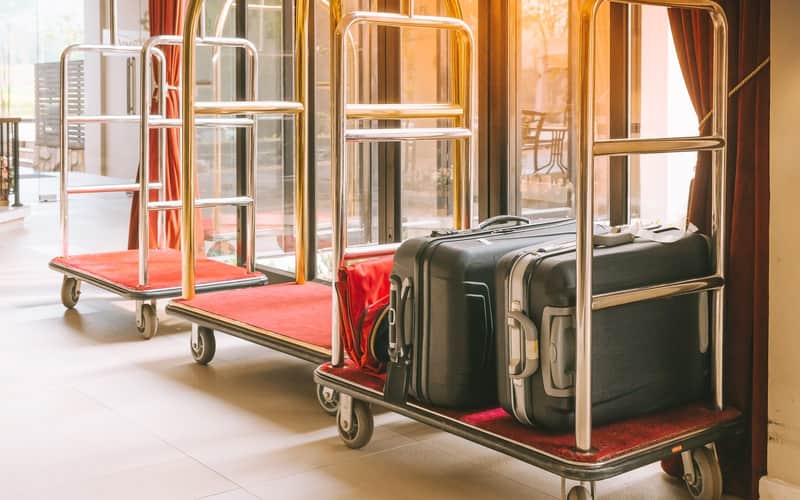Bed bugs are often associated with traveling. But why? How has this little wingless insect come to be known as a world traveler? And how do bed bugs travel in the first place?

Take a look at some of the ways these creatures end up spreading far and wide. Then, learn a few tips to help you be a more bed bug-savvy traveler.
Bed bugs lack wings, so it’s not like they can fly from place to place. Additionally, bed bugs are not known for their jumping prowess. Because of this, they get around by either crawling or hitchhiking. That’s right, bed bugs can stow away on or in your belongings, including clothing, purses, backpacks and luggage. That’s the primary way that they travel. They’re also known to hitch rides on furniture.
How Do You Get Bed Bugs?
So, how do you get bed bugs? There’s a common misconception that people with bed bugs don’t keep clean homes. This is untrue, as anyone is capable of getting bed bugs.
Here’s the thing about bed bugs: They like to make their move when you’re very still. That means you could pick them up any time you’re sitting or resting for a decent period of time in a place where they’re present. The same applies to pieces of furniture or other inanimate objects. Here are some of the many scenarios in which these insects might hitch a ride:
- In a cab
- At a train or bus station
- In an airport
- At a theater
- At a hotel, bed and breakfast or even a friend or family member’s home
- Any clothing or furniture, new or used, from any type of store
Travel Tips to Help Prevent the Spread of Bed Bugs
Wondering if you should cancel all of your vacation plans to avoid bed bugs? That’s probably unnecessary. The following travel tips could help reduce the chances that you bring back unwelcome souvenirs.
- Don’t set your luggage on the floor until you have inspected the room. It’s a good idea to stow it in the bathroom, because it’s harder for bed bugs to hide there as they’re easier to spot
- Pull the cover off the sheets and look for signs of bed bugs, such as exoskeletons and rust-colored blood spots.
- Inspect the bedding by slowly pulling the sheets and mattress pad back.
- Check all four corners and seams for indications of bed bugs.
- Check the luggage rack, closets, furniture, curtains, chest of drawers and hard surfaces for bed bugs, too. This includes the seams of furniture, the area behind the headboard and cracks and crevices in the headboard itself.
- Store luggage on either the luggage rack or on a hard surface after you’ve confirmed there are no bed bugs.
- If you find bed bugs, request a new room or hotel.
How Do You Treat Bed Bugs?
If you find you’ve managed to bring bed bugs home from your most recent vacation — or that overnight guests have inadvertently left you with an infestation — you need to act quickly. These insects are notoriously difficult to get rid of, so bed bug DIY remedies are not a good idea. Rather, enlist the help of a professional bed bug control service, like Terminix®, to help you deal with bed bugs.
Terminix offers free bed bug inspections in which a trained technician can perform an extensive evaluation of your home, including the areas where bed bugs are often found, such as beds, headboards, furniture and linens. If bed bugs are found, then your technician will recommend a customized treatment and prevention plan.
Make sure you don’t lose any sleep over bed bugs. Schedule your Terminix inspection today!



